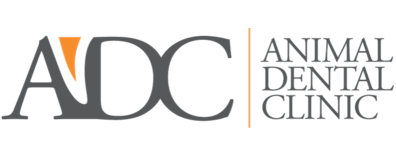Oral Diagnostics
Oral Diagnostics

Because animals prefer to conceal their oral problems, establishing an accurate oral diagnosis can be challenging unless a systematic approach is followed.
Even before an animal is examined, a patient’s species, breed, sex, and age provide clues as to their oral disease status. Veterinarians are often aware of specific predispositions to oral disease based on these factors. For example, smaller dogs are more predisposed to periodontal disease while larger dogs are more predisposed to endodontic disease. Age is also important because the oral disease can progress undetected and accumulate over time, especially in the absence of routine oral hygiene, oral diagnosis, and oral treatment.
In non-anesthetized, cooperative animals, a visual oral examination can provide valuable information regarding oral health. Many indicators of oral disease can be noted in the physical examination of a cooperative patient. Examples include; significant dental plaque and calculus, unpleasant oral odor, gingivitis, gingival recession, mucosal lesions, enamel defects, tumors, and tooth fractures.
While this is useful information, it is in no way a complete picture of the full extent of an animal’s oral disease. Treatment based on these easily visible findings alone is likely to be incomplete and in some cases may even be harmful to the patient.A patient’s treatment plan should always be guided by the oral diagnostics described below. Performing dental treatment based on “red flags” (such as the presence of calculus) alone is similar to turning a car’s check engine light off without actually checking the engine for problems. While it may provide instant gratification, the underlying disease is allowed to progress undisturbed. Once a patient has been anesthetized, a complete examination of the oral cavity can be performed. The base of the tongue, pharynx (back of the mouth), tonsils, inner surfaces of teeth, and back teeth are all visible, and finding previously-unseen abnormalities in these structures is not uncommon.
Dr. Farcas performs a complete oral examination on an anesthetized patient while a staff member takes photographs for documentation in the patient’s medical record. All surfaces of all the teeth, the palate, tonsils, and pharynx are evaluated. It’s not uncommon to find new problems at this stage that were not detectable on the previous awake oral examination.
Once the oral examination has been completed, dental radiography (x-ray) is performed. This gives much-needed information about the inner structures of teeth and their roots. Dental radiography is the tool that allows determination of the degree of bone loss in teeth affected by periodontal disease, whether apical root abscesses are present, whether the root of a traumatized tooth is intact, and the type, extent and pattern of tooth resorption (and more). All of these directly inform treatment decisions for individual teeth, and the patient as a whole.
The continuation of oral diagnostics is periodontal probing, dental exploration, and charting.
In periodontal probing, a fine blunt probe is inserted into the gingival sulcus surrounding each tooth to measure depth. If the probe passes easily beyond a normal probing depth, a periodontal pocket has been found. Periodontal pockets are usually found in obviously-diseased teeth, but may also be present with an otherwise-normal-appearing tooth. Probing depth and bone loss shown by dental radiographs together are used to determine the treatment plan for affected teeth.
Exploration uses a very fine, sharp instrument called an explorer to examine the hard enamel surfaces of the teeth. The sharp tip allows the user to detect very subtle changes in the texture of the tooth surface. Dental caries lesions, tooth resorptive lesions, and enamel defects are best detected with a combination of exploration and dental radiography.
Dental charting is an important part of medical record keeping where the details of all of the oral examination findings, periodontal probing, and exploration are recorded. This is not only to complete the patient’s medical record, but also gives the managing veterinarian a complete picture that includes the results of several detailed examinations. When oral examination reveals tumors or abnormal-appearing tissue, biopsy is warranted. Biopsy is the surgical sampling of the mass or abnormal tissue. After the biopsy sample is obtained, the surgical site is closed with sutures. Biopsy alone, however, isn’t very useful because simply removing the tissue in question doesn’t provide additional information about it. Once the sample has been obtained, the expertise of another type of veterinary specialist, a pathologist, is needed. The pathologist’s laboratory will prepare the sample in such a way that he/she can determine what types of cells are present, whether they are normal, inflamed, infected, or neoplastic (cancerous). If neoplastic cells are found, the pathologist can also provide information about their expected behavior; including if they are likely to be locally aggressive and if they are likely to metastasize (spread throughout the body). Because shipping samples to the laboratory, preparation of the biopsy sample, reporting the findings and interpreting the result all take time, biopsy results are usually available in 4-5 business days for soft tissues. Samples that include bone or other hard tissues require longer processing time at the laboratory. Occasionally, abnormalities in the oral cavity are caused by infection of tissues with microorganisms other than the usual oral bacteria. In cases where this is suspected, culture samples for specific types of bacteria, or fungi may be obtained. Once a sample for culture is obtained, it is shipped to the laboratory, placed on media to allow microorganisms to grow, and incubated under very specific conditions for several days to grow. After the microbes are allowed to grow, they are sampled and identified. Once the microorganism has been identified, correct treatment can be prescribed. Further testing may be performed to determine which antimicrobial drugs will be most effective. Because of the time required to ship samples, allow microorganisms to grow, identify the microorganisms, and interpret the results, culture results are generally available 5-7 days after sample submission.
Patients who have experienced head trauma, those with large or extensive oral tumors, and some with congenital defects can benefit from advanced imaging, particularly computed tomography (CT or CAT scan). This form of imaging generates a 3-dimensional picture of the structures evaluated and allows for determining the full extent of invasive tumors, and planning of surgical reconstruction in a variety of scenarios.
